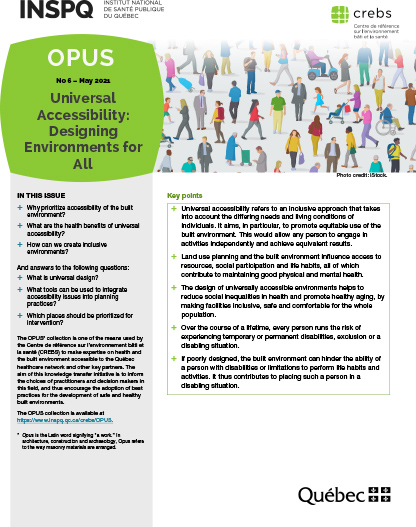Universal Accessibility: Designing Environments for All
Key points
- Universal accessibility refers to an inclusive approach that takes into account the differing needs and living conditions of individuals. It aims, in particular, to promote equitable use of the built environment. This would allow any person to engage in activities independently and achieve equivalent results.
- Land use planning and the built environment influence access to resources, social participation and life habits, all of which contribute to maintaining good physical and mental health.
- The design of universally accessible environments helps to reduce social inequalities in health and promote healthy aging, by making facilities inclusive, safe and comfortable for the whole population.
- Over the course of a lifetime, every person runs the risk of experiencing temporary or permanent disabilities, exclusion or a disabling situation.
- If poorly designed, the built environment can hinder the ability of a person with disabilities or limitations to perform life habits and activities. It thus contributes to placing such a person in a disabling situation.


